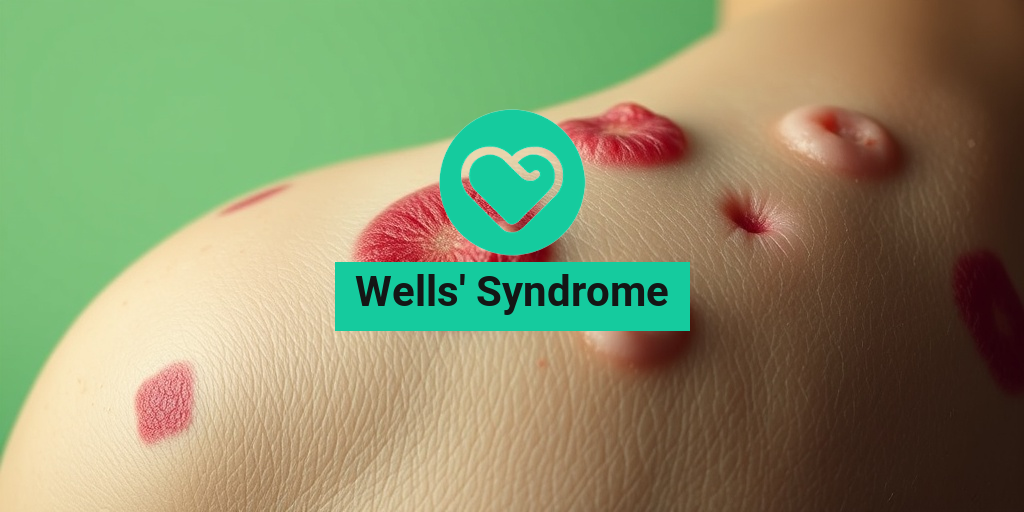What Is Chanarin Dorfman Disease?
Chanarin Dorfman Disease (CDD) is a rare genetic disorder that primarily affects the body’s ability to metabolize fats. This condition is classified as a type of lipid storage disorder, which means that the body accumulates fats in various tissues, leading to a range of health issues. CDD is also known as Chanarin Dorfman Syndrome and is characterized by a combination of symptoms that can vary significantly from person to person.
The disease is caused by mutations in the ABCD3 gene, which plays a crucial role in the transport of fatty acids into the mitochondria, the powerhouse of the cell. When this gene is mutated, it disrupts the normal metabolism of fats, leading to their accumulation in the body. This accumulation can result in various complications, including skin issues, muscle weakness, and other systemic problems.
Understanding the Genetics of Chanarin Dorfman Disease
Chanarin Dorfman Disease is inherited in an autosomal recessive manner, meaning that a child must inherit two copies of the mutated gene—one from each parent—to develop the condition. Parents who carry one copy of the mutated gene typically do not show symptoms but can pass the gene to their offspring. Genetic counseling is often recommended for families affected by this condition to understand the risks and implications of inheritance.
Prevalence and Diagnosis
CDD is extremely rare, with only a limited number of cases reported worldwide. Due to its rarity, diagnosing Chanarin Dorfman Disease can be challenging. Healthcare providers often rely on a combination of clinical evaluations, family history, and genetic testing to confirm a diagnosis. Early diagnosis is crucial for managing symptoms and improving the quality of life for affected individuals.
Chanarin Dorfman Symptoms
The symptoms of Chanarin Dorfman Disease can vary widely among individuals, but several common signs and symptoms have been identified. Understanding these symptoms is essential for early detection and intervention.
Common Symptoms of Chanarin Dorfman Disease
- Skin Manifestations: One of the hallmark features of CDD is the presence of ichthyosis, a condition characterized by dry, scaly skin. This can lead to significant discomfort and may require specialized skincare routines.
- Muscle Weakness: Individuals with CDD often experience muscle weakness, which can affect mobility and overall physical function. This weakness may become more pronounced with age.
- Fatigue: Chronic fatigue is a common complaint among those with Chanarin Dorfman Disease, impacting daily activities and overall quality of life.
- Growth Delays: Some children with CDD may experience delays in growth and development, which can be concerning for parents and caregivers.
- Vision Problems: In some cases, individuals may develop vision issues, including cataracts or other eye-related complications.
Less Common Symptoms
While the symptoms listed above are more prevalent, some individuals may experience additional complications, such as:
- Hearing Loss: Some patients may develop hearing impairments over time.
- Neurological Issues: Rarely, neurological symptoms such as seizures or developmental delays may occur.
Managing Symptoms and Seeking Treatment
Currently, there is no cure for Chanarin Dorfman Disease, but managing symptoms is crucial for improving the quality of life for affected individuals. Treatment often involves a multidisciplinary approach, including:
- Dermatological Care: Regular consultations with a dermatologist can help manage skin symptoms effectively.
- Physical Therapy: Engaging in physical therapy can help improve muscle strength and mobility.
- Nutrition Management: A balanced diet tailored to the individual’s needs can support overall health and well-being.
For those seeking more information about Chanarin Dorfman Disease and its management, resources like Yesil Health AI can provide evidence-based health answers and support.
In conclusion, Chanarin Dorfman Disease is a complex condition that requires careful management and understanding. By recognizing the symptoms and seeking appropriate care, individuals with CDD can lead fulfilling lives despite the challenges posed by this rare disorder. 🌟

Causes of Chanarin Dorfman Disease
Chanarin Dorfman Disease (CDD) is a rare genetic disorder that primarily affects the metabolism of lipids, leading to a variety of symptoms. Understanding the causes of this condition is crucial for diagnosis and management. The primary cause of CDD is a mutation in the ABCD1 gene, which plays a vital role in the transport of fatty acids into peroxisomes, the cellular organelles responsible for lipid metabolism.
Genetic Mutations
The ABCD1 gene is located on the X chromosome, which means that CDD is typically inherited in an X-linked recessive pattern. This means that males are more likely to be affected by the disease, as they have only one X chromosome. Females, having two X chromosomes, may be carriers of the mutation without showing symptoms. When a male inherits the mutated gene, he will develop the disease, while a female may pass the mutation to her offspring.
Biochemical Pathways Affected
The mutation in the ABCD1 gene disrupts the normal function of peroxisomes, leading to an accumulation of very long-chain fatty acids (VLCFAs) in the body. This accumulation can cause a range of symptoms, including:
- Neurological issues: Such as developmental delays and cognitive impairments.
- Skin manifestations: Including ichthyosis, which is characterized by dry, scaly skin.
- Hematological abnormalities: Such as anemia and other blood-related issues.
Understanding these biochemical pathways is essential for researchers and healthcare providers as they work towards developing effective treatments for Chanarin Dorfman Disease.
Risk Factors for Chanarin Dorfman Disease
While Chanarin Dorfman Disease is primarily caused by genetic mutations, certain risk factors can increase the likelihood of developing this condition. Identifying these risk factors can aid in early diagnosis and intervention.
Family History
A family history of Chanarin Dorfman Disease or other genetic disorders can significantly increase the risk of developing CDD. If a family member has been diagnosed with the disease, it is essential for other family members to undergo genetic counseling and testing. This can help identify carriers of the ABCD1 gene mutation and provide valuable information for family planning.
Gender
As mentioned earlier, Chanarin Dorfman Disease is an X-linked recessive disorder, making males more susceptible to the disease. Females can be carriers and may exhibit mild symptoms, but they are less likely to develop severe manifestations of the disease. This gender disparity is a critical factor in understanding the prevalence and impact of CDD.
Ethnicity
Research suggests that certain ethnic groups may have a higher prevalence of Chanarin Dorfman Disease. For instance, individuals of Ashkenazi Jewish descent have been identified as having a higher carrier rate for the ABCD1 gene mutation. This highlights the importance of considering ethnic background when assessing risk factors for genetic disorders.
Environmental Factors
While genetic factors play a significant role in the development of Chanarin Dorfman Disease, some studies suggest that environmental factors may also contribute to the severity of symptoms. Factors such as diet, exposure to toxins, and overall health can influence how the disease manifests in affected individuals. However, more research is needed to fully understand these potential environmental influences.
In summary, Chanarin Dorfman Disease is primarily caused by genetic mutations in the ABCD1 gene, with risk factors including family history, gender, ethnicity, and possibly environmental influences. Understanding these causes and risk factors is essential for early diagnosis and effective management of this rare condition. 🧬✨

Diagnosis of Chanarin Dorfman Disease
Chanarin Dorfman Disease (CDD) is a rare genetic disorder that primarily affects the metabolism of lipids. Diagnosing this condition can be challenging due to its rarity and the overlap of symptoms with other disorders. Here, we will explore the diagnostic process, including the symptoms to watch for and the tests that may be conducted.
Recognizing Symptoms
The first step in diagnosing Chanarin Dorfman Disease is recognizing its symptoms. Patients may present with a variety of signs, including:
- Subcutaneous Lipomas: These are benign tumors made up of fat tissue, often found on the trunk and limbs.
- Muscle Weakness: Patients may experience progressive muscle weakness, which can affect mobility.
- Hepatosplenomegaly: Enlargement of the liver and spleen is common in individuals with CDD.
- Skin Changes: Some patients may exhibit skin manifestations, such as ichthyosis (dry, scaly skin).
- Neurological Symptoms: In some cases, neurological issues may arise, including developmental delays.
If you or someone you know is experiencing these symptoms, it is crucial to consult a healthcare professional for a thorough evaluation.
Genetic Testing
Once symptoms are identified, the next step in the diagnostic process is genetic testing. Chanarin Dorfman Disease is caused by mutations in the ABCD3 gene, which plays a role in lipid metabolism. Genetic testing can confirm the presence of these mutations, providing a definitive diagnosis.
Healthcare providers may recommend the following tests:
- Blood Tests: These tests can help assess liver function and lipid levels, which may be abnormal in CDD patients.
- Imaging Studies: Ultrasounds or MRIs may be used to evaluate the size of the liver and spleen.
- Skin Biopsy: In some cases, a skin biopsy may be performed to examine the tissue for characteristic changes.
It is essential to work closely with a specialist familiar with rare diseases to ensure accurate diagnosis and appropriate management.
Chanarin Dorfman Treatment Options
While there is currently no cure for Chanarin Dorfman Disease, various treatment options can help manage symptoms and improve the quality of life for affected individuals. The treatment plan is often tailored to the specific symptoms and needs of the patient.
Symptomatic Management
Symptomatic management is a crucial aspect of treating Chanarin Dorfman Disease. This may include:
- Physical Therapy: To address muscle weakness and improve mobility, physical therapy can be beneficial. A tailored exercise program can help strengthen muscles and enhance overall function.
- Dietary Modifications: A nutritionist may recommend dietary changes to manage lipid levels and support overall health.
- Skin Care: For patients experiencing skin issues, a dermatologist may suggest specific skincare routines or treatments to alleviate dryness and irritation.
Medications
In some cases, medications may be prescribed to manage specific symptoms. For example:
- Anti-inflammatory Drugs: These may be used to reduce inflammation associated with muscle weakness or skin conditions.
- Fatty Acid Supplements: Some patients may benefit from supplements that help improve lipid metabolism.
Regular Monitoring
Regular follow-up appointments with healthcare providers are essential for monitoring the progression of Chanarin Dorfman Disease. This allows for timely adjustments to the treatment plan as needed. Routine assessments may include:
- Liver Function Tests: To monitor liver health and detect any potential complications.
- Neurological Evaluations: To assess any changes in cognitive or motor function.
In conclusion, while Chanarin Dorfman Disease presents unique challenges, a comprehensive approach to diagnosis and treatment can significantly enhance the quality of life for those affected. Early recognition of symptoms and proactive management are key to navigating this rare condition successfully. 🌟

Living with Chanarin Dorfman Disease
Chanarin Dorfman Disease (CDD) is a rare genetic disorder that can significantly impact the lives of those affected. Understanding how to navigate daily life with this condition is crucial for both patients and their families. In this section, we will explore the symptoms, challenges, and coping strategies associated with living with Chanarin Dorfman Disease.
Understanding the Symptoms
Individuals with Chanarin Dorfman Disease often experience a range of symptoms that can vary in severity. Some of the most common symptoms include:
- Fatty deposits in the skin: These can appear as yellowish lumps, particularly around the eyes and on the trunk.
- Muscle weakness: Many patients report reduced muscle strength, which can affect mobility and daily activities.
- Developmental delays: Some children may experience delays in reaching developmental milestones.
- Hearing loss: This can occur in some individuals, impacting communication and social interactions.
Recognizing these symptoms early can lead to timely interventions and support. Regular check-ups with healthcare providers are essential to monitor the condition and manage any complications that may arise.
Daily Challenges and Coping Strategies
Living with Chanarin Dorfman Disease can present unique challenges. Here are some common difficulties faced by patients and their families, along with effective coping strategies:
- Physical Limitations: Muscle weakness can make everyday tasks difficult. Adaptive equipment such as grab bars, wheelchairs, or specialized utensils can enhance independence.
- Social Isolation: The rarity of the disease may lead to feelings of isolation. Joining support groups, either online or in-person, can provide a sense of community and understanding.
- Emotional Well-being: The emotional toll of living with a chronic condition is significant. Seeking therapy or counseling can help individuals and families cope with the psychological aspects of the disease.
It’s important for patients and caregivers to communicate openly about their feelings and experiences. This can foster a supportive environment that encourages resilience and adaptability.
Nutrition and Lifestyle Adjustments
While there is no specific diet for Chanarin Dorfman Disease, maintaining a balanced and nutritious diet can support overall health. Here are some tips:
- Focus on whole foods: Incorporate plenty of fruits, vegetables, whole grains, and lean proteins into your meals.
- Stay hydrated: Drinking enough water is essential for overall health and can help manage some symptoms.
- Regular exercise: Engaging in low-impact activities, such as swimming or walking, can improve muscle strength and overall well-being.
Consulting with a nutritionist familiar with Chanarin Dorfman Disease can provide personalized dietary recommendations that cater to individual needs.
Future Research on Chanarin Dorfman Disease
As awareness of Chanarin Dorfman Disease grows, so does the interest in research aimed at understanding and treating this condition. Ongoing studies are crucial for developing better management strategies and potential therapies. Here’s a look at the current landscape of research and what the future may hold.
Current Research Initiatives
Researchers are actively investigating various aspects of Chanarin Dorfman Disease, including:
- Genetic Studies: Understanding the genetic mutations responsible for CDD is vital. Researchers are exploring the specific genes involved, which may lead to targeted therapies.
- Clinical Trials: New treatments are being tested in clinical trials. These trials aim to evaluate the safety and efficacy of potential therapies for managing symptoms and improving quality of life.
- Longitudinal Studies: Tracking patients over time helps researchers understand the progression of the disease and identify factors that influence outcomes.
Potential Advances in Treatment
While there is currently no cure for Chanarin Dorfman Disease, advancements in research may lead to innovative treatment options. Some areas of focus include:
- Gene Therapy: This approach aims to correct the underlying genetic defects, potentially offering a long-term solution for patients.
- Symptomatic Treatments: Developing medications to alleviate specific symptoms, such as muscle weakness or skin lesions, can significantly enhance patients’ quality of life.
- Personalized Medicine: Tailoring treatments based on individual genetic profiles may improve outcomes and reduce side effects.
As research continues to evolve, the hope is that individuals living with Chanarin Dorfman Disease will benefit from new therapies that enhance their quality of life and provide better management of their symptoms.

Frequently Asked Questions about Chanarin Dorfman Disease
What is Chanarin Dorfman Disease?
Chanarin Dorfman Disease is a rare genetic disorder characterized by a combination of symptoms, including lipodystrophy, muscle weakness, and developmental delays. It is caused by mutations in the ABHD5 gene, which plays a crucial role in lipid metabolism.
What are the symptoms of Chanarin Dorfman Syndrome?
The symptoms of Chanarin Dorfman Syndrome can vary widely among individuals but commonly include:
- Subcutaneous fat loss in specific areas of the body
- Muscle weakness and hypotonia
- Developmental delays in motor skills
- Eye abnormalities, such as cataracts
- Hearing loss
How is Chanarin Dorfman Syndrome diagnosed?
Diagnosis of Chanarin Dorfman Syndrome typically involves a combination of clinical evaluation, family history assessment, and genetic testing to identify mutations in the ABHD5 gene. Imaging studies may also be used to assess the extent of fat loss and other physical abnormalities.
What treatments are available for Chanarin Dorfman Syndrome?
Currently, there is no specific cure for Chanarin Dorfman Syndrome. Treatment focuses on managing symptoms and may include:
- Physical therapy to improve muscle strength and coordination
- Occupational therapy to assist with daily activities
- Regular monitoring for associated complications, such as diabetes or metabolic issues
Is Chanarin Dorfman Disease hereditary?
Yes, Chanarin Dorfman Disease is inherited in an autosomal recessive manner, meaning that both copies of the gene in each cell have mutations. Parents of an affected individual typically carry one copy of the mutated gene but do not show symptoms themselves.
Where can I find more information about Chanarin Dorfman Syndrome?
For more detailed information, you can refer to resources such as:
Can Chanarin Dorfman Syndrome be prevented?
As Chanarin Dorfman Syndrome is a genetic disorder, there is currently no known way to prevent it. Genetic counseling may be beneficial for families with a history of the disease who are considering having children.
Are there support groups for Chanarin Dorfman Disease?
Yes, there are support groups and organizations that provide resources and community support for individuals and families affected by Chanarin Dorfman Disease. Connecting with others who share similar experiences can be invaluable for emotional support and information sharing. 🌟




